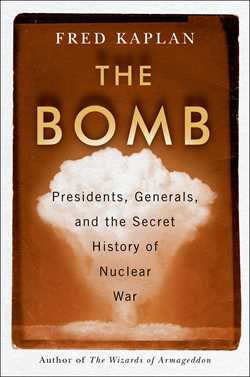Open. Shut. The pandemic continues to drive us crazy.
And for those who have gotten sick, the suffering and frustration and anger and confusion refuses to end.
So we decided to start a new chapter in this pandemic nightmare.
We decided to read. More often. More books.
And when we say “read”, we mean physical books. Audio books have a place (in the car), but electronic versions read on tablets and Kindles and sundry doodads are major no-nos. True bibliophiles want to hold a book, smell a book, rifle through the pages and bask in a momentary breeze.
And so we read.
Choices on our “must-read” list . . .
The Buddhist on Death Row: How One Man Found Light in the Darkest Place (Simon & Schuster, $27)
When His Holiness the Dalai Lama gushes, “This book shows vividly how, even in the face of the greatest adversity, compassion and a warm-hearted concern for others bring peace and inner strength”, you know you are holding an important book.
 Great book, great lessons. In 1981, when he was 19, Jarvis Jay Masters was imprisoned at San Quentin and then accused of murdering a prison guard five years later. A criminal investigator offered to teach him breathing exercises to help him deal with the rage, anxiety and panic as he prepared for his trial. Figuring he had nothing to lose, he tried meditating and likened it to the George Clinton lyric, “Free your mind and your ass will follow.”
Great book, great lessons. In 1981, when he was 19, Jarvis Jay Masters was imprisoned at San Quentin and then accused of murdering a prison guard five years later. A criminal investigator offered to teach him breathing exercises to help him deal with the rage, anxiety and panic as he prepared for his trial. Figuring he had nothing to lose, he tried meditating and likened it to the George Clinton lyric, “Free your mind and your ass will follow.”
Masters transformed his outlook and became a bodhisattva—someone dedicated to reducing others’ suffering. He lives with the threat of execution everyday, yet he makes the most out of confinement. Though not a Buddhist himself, author David Sheff learned a multitude of lessons from all the time he’s spent with Masters. They are shared with readers; to research the book, Sheff made more than 200 trips to death row, visiting Masters almost every week in Tuesdays with Morrie fashion, recorded more than 150 hours of conversations. Sheff also spoke on the phone with Masters for countless hours.
This is a profound book about one man’s capacities for learning, enduring, and ultimately, inspiring others—capacities we all share.
Fallout: The Hiroshima Cover-up and the Reporter Who Revealed It to the World (Simon & Schuster, $27)
New history is made every day, but we never forget events that shattered the world. August 6 marked the 75th anniversary of the first atomic bombing. Fallout exposes how the U.S. government engaged in the biggest cover-up of the 20th century by suppressing the truth about the full effects of atomic weapons and radiation poisoning after the bombings of
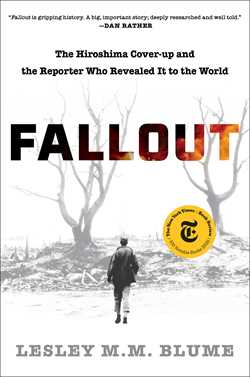
Garnering praise from noted voices including Carl Bernstein, Dan Rather, Adam Gopnik and former Secretary of Defense Bill Perry, the book serves as a timely reminder of the essential role of journalism to save lives when the world is threatened by a global existential crisis. It also is a call for remembrance and deterrence in regard to nuclear warfare. Right now, the Doomsday Clock reads: 100 seconds to midnight according to the Bulletin of the Atomic Scientists—midnight being nuclear annihilation. This setting is closer than the world has ever been to doomsday before, even during the height of the Cold War.
A Private Cathedral (Simon & Schuster, $28)
In James Lee Burke’s 40th (!), beloved Detective Dave Robicheaux must battle the most terrifying adversary he has ever encountered: A time-traveling superhuman assassin.

Mixing crime, romance, mythology, horror and science fiction, the book is a captivating story about the all-consuming, all-conquering power of love. to give away any more would ruin the mysteries . . . and horror.
Leave It As It Is: A Journey Through Theodore Roosevelt’s American Wilderness (Simon & Schuster, $28)
Inspired by Theodore Roosevelt’s crusading environmental legacy and troubled by the fight that still wages today over America’s public lands, acclaimed nature writer David Gessner takes to the road.
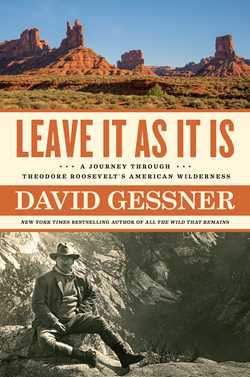
Roosevelt’s life guides Gessner along a wilderness road trip through America’s national parks and wild places. He travels to the Dakota badlands where Roosevelt awakened as a naturalist; to Grand Canyon, Yosemite and the Grand Canyon where Roosevelt escaped during the grind of his reelection tour; and finally, to Bears Ears, Utah, a monument proposed by Native Tribes that is embroiled in a national conservation fight.
Along the way, Gessner questions and reimagines Roosevelt’s vision for today in a profound meditation on our environmental legacy and future. Part travelogue, part environmental clarion call and part biography of one of America’s greatest conservationists, the book has been praised by Robert Redford, who says,it’s a “rallying cry in the age of climate change”.
Reaganland: America’s Right Turn 1976-1980 (Simon & Schuster, $40)
Over two decades, Rick Perlstein has published three definitive works about the emerging dominance of conservatism in modern American politics. With the saga’s final installment, he has delivered yet another stunning literary and historical achievement. In late 1976, Ronald Reagan was dismissed as a man without a political future: defeated in his nomination bid against a sitting president of his own party, blamed for President Gerald Ford’s defeat, too old to make another run.
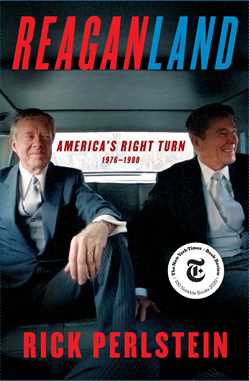
His comeback was fueled by an extraordinary confluence: fundamentalist preachers and former segregationists reinventing themselves as militant crusaders against gay rights and feminism; business executives uniting against regulation in an era of economic decline; a cadre of secretive “New Right” organizers deploying state-of-the-art technology, bending political norms to the breaking point—and Reagan’s own unbending optimism, his ability to convey unshakable confidence in America as the world’s “shining city on a hill.”
Chasing Chopin: A Musical Journey Across Three Centuries, Four Countries, and a Half-Dozen Revolutions (Simon & Schuster, $27)
The Frédéric Chopin Annik LaFarge presents here is not the sickly figure so often portrayed. The artist she discovered is, instead, a purely independent spirit: An innovator who created a new musical language, an autodidact who became a spiritually generous, trailblazing teacher, a stalwart patriot during a time of revolution and exile.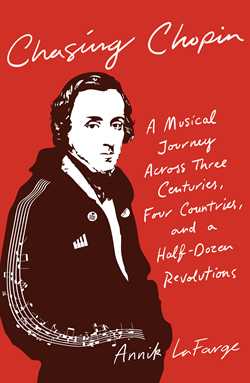
LaFarge follows in his footsteps during the years, 1837-1840, when he composed his iconic “Funeral March”—dum dum da dum—using its composition story to illuminate the key themes of his life. LaFarge visited piano makers, monuments, churches, and archives; she talked to scholars, jazz musicians, video game makers, software developers, music teachers, theater directors and of course dozens of pianists.
Dare we say: True music to our eyes!

